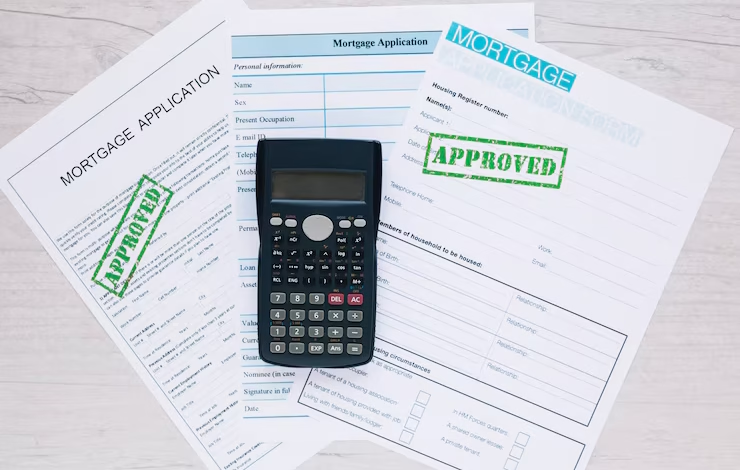Understanding 780 CMR 110.R5.2.12: Your Guide

When it comes to construction in Massachusetts, the rules and regulations can feel like a maze. One key piece of this puzzle is 780 CMR 110.R5.2.12, a specific section of the Massachusetts State Building Code that ensures construction projects are safe, sturdy, and up to standard. If you’re a homeowner planning a renovation, a contractor managing a build, or just someone curious about building regulations, this article will break it all down for you.
In this guide, we’ll explore what 780 CMR 110.R5.2.12 is, why it matters, and how it impacts construction projects across the state. We’ll keep it conversational and easy to digest, with plenty of headings, lists, and tables to make the information scannable. Plus, we’ll wrap up with an FAQ section to tackle common questions you might have. Let’s dive in!
What is 780 CMR? A Quick Overview
Before we get into the nitty-gritty of 780 CMR 110.R5.2.12, let’s set the stage. The Massachusetts State Building Code, officially known as 780 CMR (Code of Massachusetts Regulations), is the rulebook for all things construction in the state. It covers everything from how tall a building can be to how safe it needs to stay during a storm. Managed by the Board of Building Regulations and Standards (BBRS), this code is based on international standards like the International Building Code (IBC) but tailored with Massachusetts-specific tweaks.
The code is split into chapters and sections, each focusing on different aspects of construction, such as:
-
Fire safety
-
Structural design
-
Energy efficiency
-
Accessibility for all
Our focus today, 780 CMR 110.R5.2.12, falls under the section about construction supervisors the people who make sure your project doesn’t just look good but is built right.
Zooming In: What Does 780 CMR 110.R5.2.12 Mean?
So, what’s the deal with 780 CMR 110.R5.2.12? In simple terms, this section says that a licensed construction supervisor (or someone they designate) must be on-site during certain critical parts of a construction project. Think of it like having a referee at a game someone needs to be there to call the shots and make sure everything’s fair and safe.
The Core Rule
Here’s the gist: If you’re building, renovating, or tearing something down in Massachusetts, and it requires a building permit, a licensed supervisor has to show up at key moments. These moments include:
-
Foundation Work: Checking that the ground is prepped and the concrete is poured correctly.
-
Framing: Making sure the skeleton of the building joists, beams, and all is solid and secure.
-
Roofing and Exterior: Ensuring the roof and walls can stand up to Massachusetts weather (hello, snowstorms!).
-
Final Checks: Giving the green light that everything’s done and up to code before the project wraps up.
If something unexpected pops up like water pooling where it shouldn’t the supervisor has to flag it to the building official and figure out a fix.
Who’s Affected?
This rule applies to a ton of projects, including:
-
New homes or commercial buildings
-
Renovations (big or small)
-
Demolitions
-
Anything needing a permit
There are a few exceptions like some farm buildings or projects run by architects but for most folks, this is the standard.
Why Does This Rule Matter?
You might be wondering, “Why all the fuss about having someone on-site?” It’s not just red tape it’s about keeping everyone safe and the project on track. Here’s why 780 CMR 110.R5.2.12 is a big deal:
-
Catches Mistakes Early: A supervisor can spot a wobbly beam or a shaky foundation before it’s buried under drywall.
-
Keeps Things Legal: Following the code means fewer headaches with inspections or fines down the road.
-
Protects People: From workers swinging hammers to families moving in later, safety is the top priority.
For homeowners, it’s reassurance that your dream house won’t turn into a nightmare. For contractors, it’s a way to prove your work is top-notch and avoid legal trouble.
Where Does 780 CMR 110.R5.2.12 Fit in the Big Picture?
The Massachusetts Building Code is like a giant puzzle, and 780 CMR 110.R5.2.12 is just one piece. Here’s how it connects to the rest:
-
780 CMR 1.00: How the code is enforced
-
780 CMR 5.00: Rules on building size and height
-
780 CMR 9.00: Fire safety systems
-
780 CMR 110.R5: All about construction supervisors
Section 110.R5 is the supervisor’s playbook, and 2.12 is a specific play making sure they’re on the field when it counts.
The 10th Edition: What’s New in the Code?
Massachusetts doesn’t let its building code gather dust. The 10th edition, rolled out on October 11, 2024, is the latest update, replacing the 9th edition from 2017. It’s built on the 2021 International Codes and comes with some fresh changes:
-
Energy Savings: Tighter rules to make buildings greener.
-
Flood Zones: Stronger designs for areas prone to water (looking at you, coastal towns).
-
Fire Protection: More sprinkler rules and tougher materials.
-
Accessibility: Better access for everyone, per the ADA.
While 780 CMR 110.R5.2.12 hasn’t changed much, supervisors now need to keep up with these new twists to stay compliant.
Table 1: 9th vs. 10th Edition Highlights
|
Feature |
9th Edition (2017) |
10th Edition (2024) |
|---|---|---|
|
Base Standard |
2015 IBC |
2021 IBC |
|
Energy Rules |
2015 energy code with MA tweaks |
2021 energy code with stricter MA rules |
|
Flood Protection |
Basic flood design |
Enhanced for flood-prone areas |
|
Fire Safety |
Limited sprinkler mandates |
Broader sprinkler and material updates |
|
Effective Date |
2017 |
October 11, 2024 |
This table gives you a quick look at how the code’s evolved—handy for planning your next project!
How to Follow 780 CMR 110.R5.2.12 Like a Pro
Ready to make sure your project checks all the boxes? Here’s a step-by-step guide to nailing compliance:
-
Find a Licensed Supervisor: Pick someone certified for your project type residential, commercial, or specialty.
-
Plan Key Visits: Schedule the supervisor for those must-see moments like foundation work or framing.
-
Keep Records: Log every visit and approval. Paper trails save the day if questions come up.
-
Stay Updated: The 10th edition’s here, so brush up on the latest rules.
-
Talk to the Inspector: Hit a snag? Report it fast and work out a solution with the building official.
Follow these, and you’re golden safe, legal, and stress-free.
Table 2: What a Construction Supervisor Does
Here’s a breakdown of a supervisor’s job under 780 CMR 110.R5:
|
Task |
What It Means |
|---|---|
|
On-Site Checks |
Showing up at key build stages |
|
Code Watchdog |
Making sure every nail meets 780 CMR |
|
Safety Boss |
Keeping the site accident-free |
|
Problem Spotter |
Flagging issues like leaks or cracks |
|
Paperwork Pro |
Tracking approvals and chats with officials |
This table shows why supervisors are the MVPs of any build.
Deep Dive: The Role of a Construction Supervisor
Let’s take a closer look at who these supervisors are and why they’re so vital. In Massachusetts, a construction supervisor license (CSL) isn’t just a piece of paper—it’s proof someone’s got the skills to oversee a project from start to finish. There are different flavors of the license:
-
Unrestricted: For big projects like homes or offices.
-
Restricted: For smaller jobs, like one- or two-family homes.
-
Specialty: For niche work like roofing or masonry.
To get licensed, folks need experience (usually 3+ years in construction), pass an exam, and sometimes take continuing education. Once they’re in, 780 CMR 110.R5.2.12 puts them front and center during the build.
Real-World Example
Imagine you’re adding a deck to your house. The supervisor’s there when the footings go in—making sure they’re deep enough for Massachusetts frost. They check the framing so it won’t wobble in the wind. And before you start grilling, they sign off that it’s all safe and sound. That’s 780 CMR 110.R5.2.12 in action.
Common Pitfalls and How to Avoid Them
Even with the best intentions, things can go sideways. Here are some traps to watch out for—and how to dodge them:
-
Skipping Visits: Don’t assume “it’s fine” without a supervisor’s eyes on it. Schedule those check-ins.
-
Ignoring Updates: The 10th edition’s new miss it, and you might miss a rule.
-
Poor Communication: If something’s off, tell the building official ASAP. Silence can lead to stop-work orders.
Stay proactive, and you’ll keep the project humming along.
FAQ: Your Top Questions Answered
Got questions? We’ve got answers. Here are some common ones about 780 CMR 110.R5.2.12:
What does 780 CMR 110.R5.2.12 require?
It mandates that a licensed construction supervisor be on-site during key construction phases to ensure everything’s done right.
Do all Massachusetts projects need a supervisor on-site?
Most do if they need a permit—new builds, renovations, demolitions. Check with your local building department for exceptions.
What if no supervisor shows up when they should?
You could face failed inspections, fines, or delays. It’s a risk not worth taking.
Can I be my own construction supervisor?
Sometimes, if you’re a homeowner doing your own small project. But for bigger jobs or modular homes, you’ll need a pro.
How do I hire a licensed supervisor in Massachusetts?
Look them up via the Massachusetts Department of Public Safety or ask your local building office for leads.
Are there penalties for breaking this rule?
Yep—fines, work stoppages, or even permit pull-backs. Play by the rules to avoid the hassle.
Wrapping It Up
Navigating 780 CMR 110.R5.2.12 might seem daunting, but it’s all about keeping construction safe and solid in Massachusetts. Whether you’re swinging a hammer or signing the checks, knowing this rule and the broader building code sets you up for success. With a licensed supervisor on-site, you’re not just following the law you’re building something that lasts.
The 10th edition’s here, so it’s a great time to get up to speed, hire the right people, and keep your project on the right side of the rules. Got a build in mind? Start with this guide, and you’ll be ready to roll.



